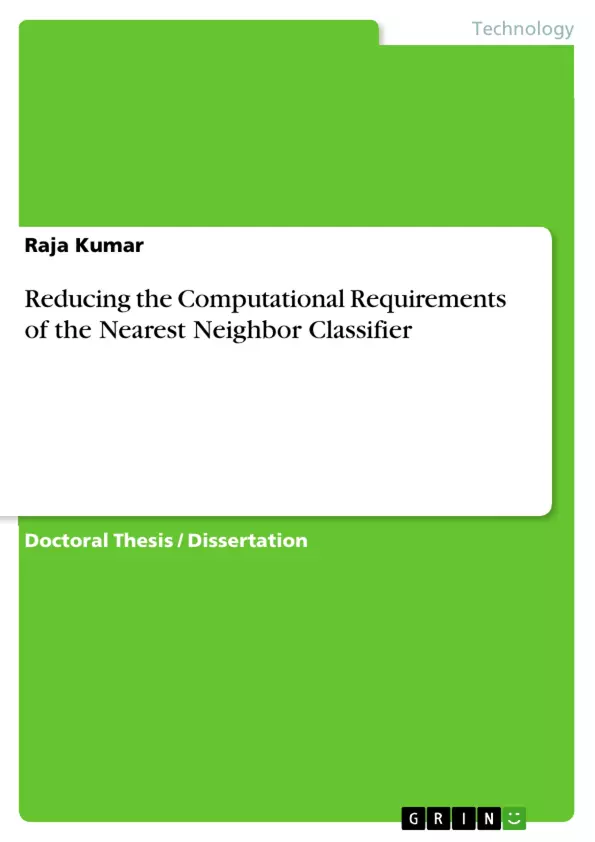The tremendous growth of data due to the Internet and electronic commerce has created serious challenges to the researches in pattern recognition. There is a need of processing and analysing data. Advances in data mining and knowledge discovery provide the requirement of new approaches to reduce the data.
In this work, methods are proposed to overcome the computational requirements of the nearest neighbor classifiers. The work shows some of the possible remedies to overcome problems with nearest neighbor based classifiers. The work proposes a new method of reducing the data set size. The author reduces the data set size in terms of number of samples and also in terms of number of features. Therefore, the holistic goal of the work is to reduce the time and space requirements and at the same time not to degrade the performance of the nearest neighbor classifier.
The nearest neighbor classifier is a popular non-parametric classifier used in many fields since the 1950s. It is conceptually a simple classifier and shows good performance.
Inhaltsverzeichnis (Table of Contents)
- Introduction
- Literature Review
- Proposed Methodology
- System Design
- Efficient Nearest Neighbor Classifier
- Experimental Results and Discussion
- Conclusion
Zielsetzung und Themenschwerpunkte (Objectives and Key Themes)
This thesis focuses on reducing the computational requirements of the nearest neighbor classifier, a fundamental algorithm in pattern recognition and machine learning. The primary objective is to develop and evaluate efficient techniques for improving the computational efficiency of the nearest neighbor classifier, particularly in handling large datasets.
- Computational efficiency of nearest neighbor classifier
- Data dimensionality reduction
- Feature selection and extraction
- Performance evaluation of different techniques
- Practical applications of nearest neighbor classifier
Zusammenfassung der Kapitel (Chapter Summaries)
- Introduction: This chapter provides a comprehensive overview of the nearest neighbor classifier, its applications, and the challenges associated with its computational complexity, particularly in dealing with large datasets.
- Literature Review: This chapter presents a detailed review of existing methods and techniques for addressing the computational limitations of the nearest neighbor classifier. It examines various approaches, including data dimensionality reduction, feature selection, and efficient search algorithms.
- Proposed Methodology: This chapter presents the proposed methodology for reducing the computational requirements of the nearest neighbor classifier. It details the system design and the development of an efficient nearest neighbor classifier, focusing on the application of specific techniques to improve computational efficiency.
- Experimental Results and Discussion: This chapter presents the results of experiments conducted to evaluate the effectiveness of the proposed methodology. It analyzes the performance of the efficient nearest neighbor classifier compared to traditional approaches and discusses the implications of the findings.
Schlüsselwörter (Keywords)
The key themes explored in this thesis include nearest neighbor classifier, computational efficiency, data dimensionality reduction, feature selection, feature extraction, pattern recognition, machine learning, and performance evaluation.
- Quote paper
- Raja Kumar (Author), 2018, Reducing the Computational Requirements of the Nearest Neighbor Classifier, Munich, GRIN Verlag, https://www.grin.com/document/495106



